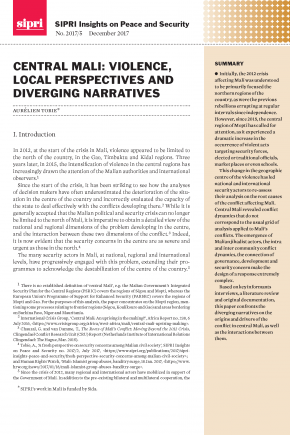Central Mali: Violence, Local Perspectives and Diverging Narratives
Initially, the 2012 crisis affecting Mali was understood to be primarily focused on the northern regions of the country, as were the previous rebellions that had been errupting at regular intervals since independence. However, the dramatic increase since 2015 in violence targeting security forces, elected or traditional officials, market places and schools in Mopti, the central region of Mali, has shifted attention.
This change in the geographic centre of the violence has led national and international security actors to re-assess their analysis on the root causes of the conflict affecting Mali. Central Mali revealed conflict dynamics that do not correspond to the usual analysis applied to Mali’s conflicts. The emergence of Malian jihadist actors; ongoing intra- and inter-community conflict dynamics; and the connection of governance, development and security make the design of a response extremely complex.
Based on key interviews, a literature review and original documentation, this paper confronts the diverging narratives on the origins and drivers of the conflict in central Mali, as well as the interactions between them.
I. Introduction
II. Central Mali in the 2012 crisis
III. The rise of a Malian jihadist phenomenon
IV. The centre: A ‘new’ front in the conflict in Mali?
V. The militarization of political and economic demands
VI. The response: Focused too exclusively on security?

